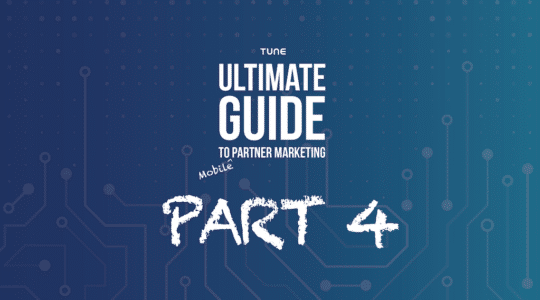
Tracking is essential when it comes to running an ad network and managing advertisers, offers, and publishers in a lucrative way. It’s hard to imagine how an ad network can provide value to advertisers if it can’t see publisher performance in real-time and optimize tactics accordingly. Furthermore, tracking technology has to be trusted (or even endorsed) by leading companies in the mobile marketing industry. That kind of trust requires time, continual product improvements, and a persistence to be unbiased. And I’m not just talking about the U.S., either — all of the above remains true no matter where in the world you start an ad network business.
Chinese customers usually ask me to weigh in when they plan to start an ad network or scale their existing ad network business. They wonder what’s the best way to handle the tracking piece. “Can I just build an an internal tracking system, or use the cheapest solution I can and build my business on top of it?” Although most times the answer is case-specific, I always ask the following question to ensure they don’t miscalculate or ignore some critical cost and benefit:
Is a solution actually cheaper than the others, or do you just think it is?
The real cost of building an in-house tracking platform
 In order to develop a very basic tracking tool (which is not equal to a platform), here’s the general plan. You’ll need to pay software engineers, who already understand tracking technology and the marketing ecosystem, to work on the project. Make sure to set aside six months for the project, given they work 12-hour days. Once you complete a beta version of this tracking tool, the work then includes maintenance, debugging, and development of missing features and new features your customers request. As a reference, the average monthly salary of a software engineer in the first-tier cities in China (Beijing, Shanghai, Guangzhou, Shenzhen) is about RMB30,000 (~4,350 USD). Now let’s do the simple math here:
In order to develop a very basic tracking tool (which is not equal to a platform), here’s the general plan. You’ll need to pay software engineers, who already understand tracking technology and the marketing ecosystem, to work on the project. Make sure to set aside six months for the project, given they work 12-hour days. Once you complete a beta version of this tracking tool, the work then includes maintenance, debugging, and development of missing features and new features your customers request. As a reference, the average monthly salary of a software engineer in the first-tier cities in China (Beijing, Shanghai, Guangzhou, Shenzhen) is about RMB30,000 (~4,350 USD). Now let’s do the simple math here:
Developing cost = RMB30,000 ✕ 5 engineers ✕ 6 months
= RMB900,000 (130,813 USD)
And that’s not all. Now comes the most resource-soaking and time-consuming part — keeping the tracking tool alive. Let’s say you just want a bare bones tracking tool, and don’t care about it being reliable, as long as it works fine. To keep costs down, you can let go of three engineers and have only two stay to maintain, debug, and add features to the tracking tool. Moreover, there is a monthly server fee ranging from RMB1,000 to RMB10,000+ based on your scale.
Monthly maintenance cost = RMB30,000 ✕ 2 engineers + server fee
= RMB61,000 − RMB70,000
(8,866 − 10,174 USD)
After investing six months and an upfront developing cost of RMB900,000 (~130,000 USD), you now have to pay about RMB68,800 (10,000 USD) every month just to keep that basic tracking tool running. At this level, the tool is not equipped with intuitive interfaces for publishers and advertisers, or advanced features such targeting and mobile parameters, let alone an API feature. Those missing features, however, are indispensable for the ad networks aiming to evolve and differentiate to win more business over competitors.
“I already have a bunch of engineers, so the cost of developing a tracking tool won’t be much.”
Unfortunately, that argument is too good to be true. There is still a cost: opportunity cost, the loss of potential gain from other alternatives when one possibility is chosen. For example, your engineers have been working on developing an app with a potential revenue of 100,000 USD. The opportunity cost of reallocating all of those engineers to develop a tracking tool is 100,000 USD, or the potential loss of revenue. A wise decision-maker considers opportunity cost when evaluating options, because opportunity cost better reflects the total potential cost than the price tag alone.
“Fine. I guess then I would try a cheap tracking solution built by a new-to-the-market company.”
You might, but I am a big believer that “there’s no such thing as a free lunch.” The costs for developing products is high. The cost for developing a reliable and great product is even higher. No one will provide a free product just to help you to make money. Therefore, make sure that new company won’t steal your offer information and use that data for their network, or share it with other companies that are more important to their business than yours. Don’t be too surprised if that happens; everyone is trying to make money, in any way they can.
“Ugh, can’t you just tell me what to do?”
This is the time I start reminding ad networks why you need a reliable, trustworthy, and industry-leading tracking platform to run and expand the ad network business. You don’t want to risk your entire business by using an unproved tracking solution. You don’t want to lose a business due to a lack of features that your advertisers and publishers demand. And you certainly don’t want to use a tracking solution that is worse than your competitor’s.
Then, after I catch my breath, I would invite the client for a demo, and hopefully the reply is:
“Yeah, sounds good. ”
Want to try a third-party platform for free for 30 days? Get HasOffers.
Author
Becky is the Senior Content Marketing Manager at TUNE. Before TUNE, she handled content strategy and marketing communications at several tech startups in the Bay Area. Becky received her bachelor's degree in English from Wake Forest University. After a decade in San Francisco and Seattle, she has returned home to Charleston, SC, where you can find her strolling through Hampton Park with her pup and enjoying the simple things between adventures with friends and family.




Leave a Reply
You must be logged in to post a comment.